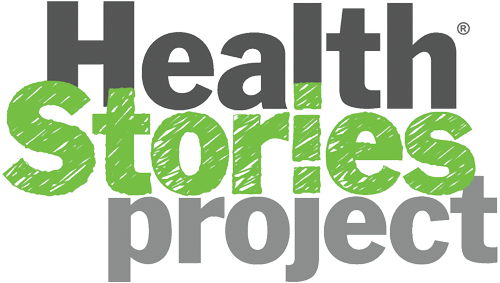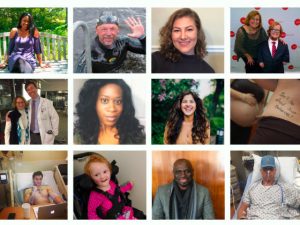About 7.5 million Americans suffer from psoriasis (the “p” is silent). A chronic inflammatory disease of the immune system, it primarily affects the skin and joints, but can also affect the fingernails, toenails, and even soft tissues like inside of the mouth.



Additionally, up to 30 percent of people with psoriasis will additionally develop psoriatic arthritis, an inflammatory form of arthritis that can cause swelling, stiffness, and pain in the joints, along with chronic fatigue. Psoriatic arthritis can develop slowly or show up suddenly with a vengeance.
We asked members of our community to tell us what life with psoriatic arthritis is like for them.
What was diagnosis like for you?
“If I hadn’t had cancer, I don’t think they would’ve diagnosed me for a long time,” says LuAnn*, a Health Stories Project community member who shared her story of coping with psoriatic arthritis. LuAnn, who is now 54, thinks she’s had the condition for approximately nine years, though it went undiagnosed for seven of those years. “Everyone kept saying, ‘You’re too young to have arthritis, it must be something else!'”
The symptoms of psoriatic arthritis are similar to other forms of arthritis, and there are no definitive tests to diagnose it. That’s why it’s imperative for people with psoriasis to see a doctor right away if they begin to suffer from joint aches and pains. Delaying treatment for just six months can result in permanent joint damage. Early diagnosis and treatment are crucial to relieving pain and inflammation.
“There are good days and bad days,” explains LuAnn. “The pain never goes away but it lessens. It can get better with a great doctor. Medication helps.
What’s it like having a condition that not many people know about?
Nearly everyone who chimed in from the Health Stories Project community agreed on one thing: having to constantly explain psoriatic arthritis to everyone from friends and colleagues to physicians can be frustrating.



“I’ve had to explain it to medical professionals,” says Sue, who has issues with mobility. “Can we please have some community education on psoriatic arthritis?”
“So little is known about this form of arthritis that people just don’t understand,” says LuAnn.
“I’ve struggled not being able to explain what this is and how it affects me,” says Brianna. “Not just the pain but the fatigue and the whole skin issue.”
“It’s so hard for others to fathom the pain and fatigue,” says Sharon. “It’s hard for me to understand and to manage my activity. My brain says I can but my body says no.”
How do others react?
Because it’s a somewhat invisible illness, people with psoriatic arthritis sometimes feel like those around them don’t take it seriously enough.



“I am on my feet for eight hours at work,” says Victoria. “I’ve had to explain to co-workers about my stiffness, swelling, and pain.”
Having a strong support system can make a world of difference for people coping with psoriatic arthritis, which is frequently accompanied by depression.
“Thank you for always being there, for always supporting me, and for never doubting my pain,” says Brianna.
And while it isn’t always easy, community members say it’s important to stay strong and try to keep a good attitude.
“You have to continue and move forward one step at a time,” says Laura. “Do something positive every day.”
“It is a struggle every day,” says Victoria. “But you have to set your mind and fight this disease with all you’ve got. Never give up!”


It’s crazy to hear that about 7.5 million Americans suffer from psoriasis and another 30% of those people develop psoriatic arthritis. My mother has had psoriasis since she was a child, but it was recently that she was diagnosed with psoriatic arthritis. I’ll be sure to talk with my mother about ways that she can treat her condition.
This is lovely